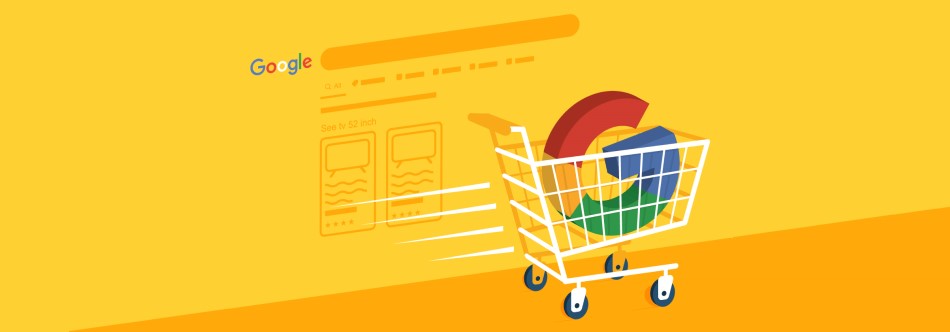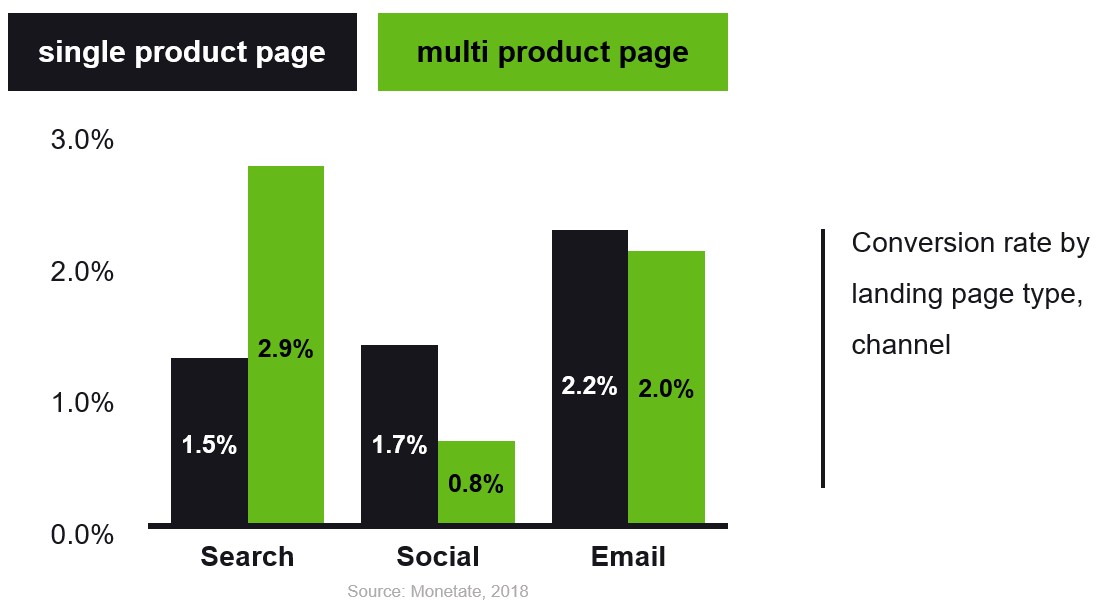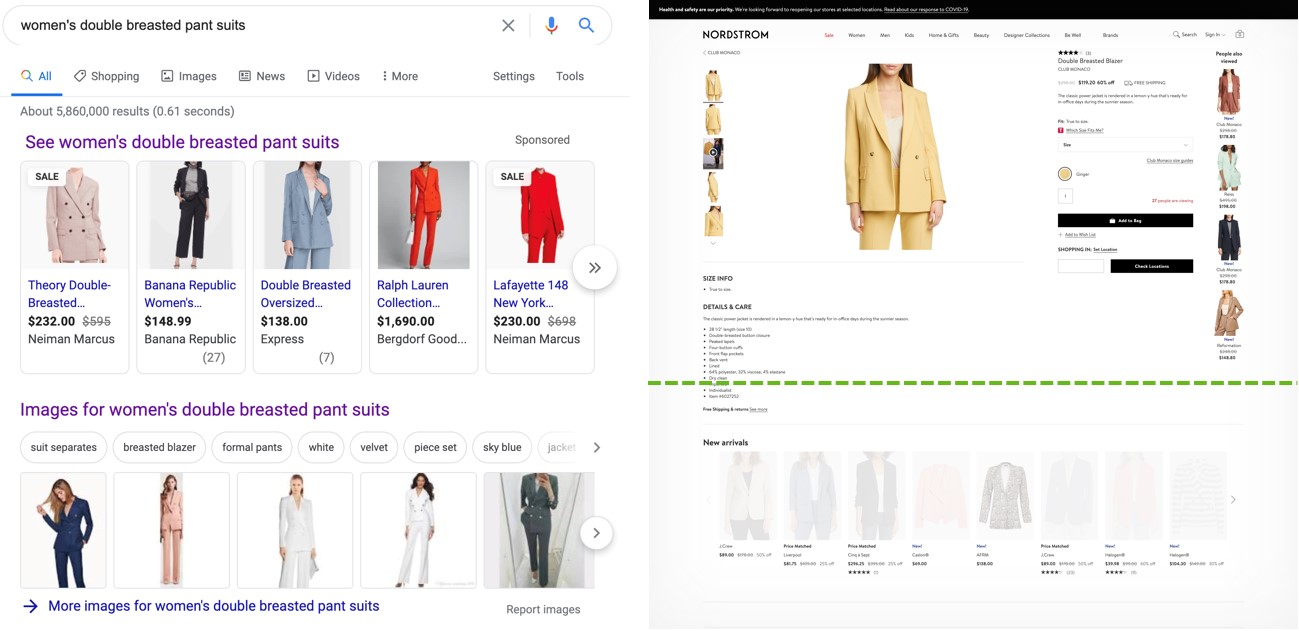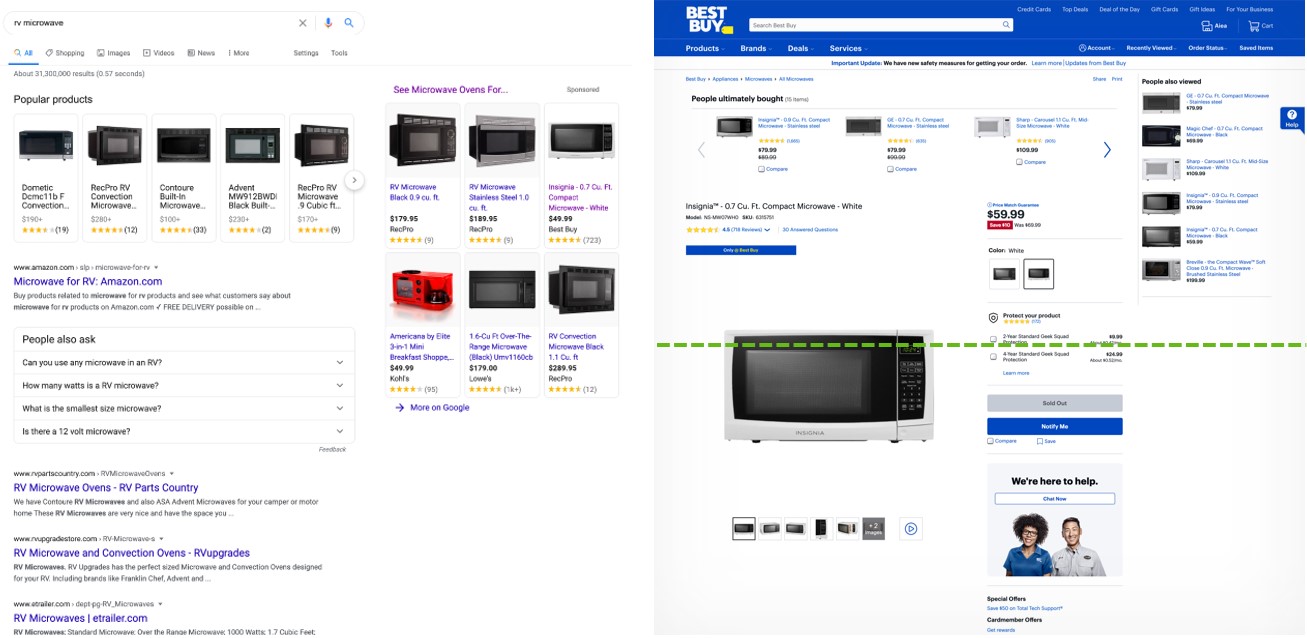25 May How Ecommerce Businesses Can Do More with Less Shopping Ad Budget via @brentcsutoras
Are you running Google Ads campaigns for your ecommerce store?
Online retailers spend a full 76% of paid search budget on Shopping Ads. Yet, studies have shown that nearly half that spend is wasted.
One simple change may be all it takes to eliminate ad spend wastage in your Google Shopping campaigns.
On May 20, I moderated a sponsored Search Engine Journal webinar presented by Jeff Deutsch, Marketing Director at Longtail UX.
Deutsch shared how optimizing your landing page and improving online shopper experience from Google Shopping Ads can boost your conversions.
Here’s a recap of the webinar presentation.


The Current Ecommerce Climate
McKinsey reports that as the COVID-19 crisis continues, “consumers increasingly expect a lengthy impact to their routines and finances, and most report a reduction in income.”
WordStream found that as of April 2020, conversion rates have dropped by an average of 21%.
As a result, 69% of brands expect they will be decreasing their ad spend this year.
Nowadays, there are two types of ecommerce marketers.
- Those who are thinking about cutting their budget.
- Those who are looking to grow their brands amid this chaotic time and take advantage of lower CPMs.
Both types of marketers can benefit from the strategies in this presentation.
Where to Optimize
So where do you optimize first?
The biggest line item in your paid search budget has the most opportunity for improvement.
For ecommerce brands, paid search is an essential part of the budget.
In 2016, Marketing Sherpa found that ecommerce brands spend 29-57% of their budget on paid search.
As of Q1 2018, Adthena reports that Google Shopping ads drive 76.4% of retail search ad spend.
Optimizing your Google Shopping Ads spend makes sense as it’s a large part of your paid search budget.
To do that, let’s understand how the customer experience is with this type of campaign.
Once users click on a Shopping ad, they are typically directed to a product detail page or a single-product landing page.


But it’s actually a bad search experience for your shoppers.
Visitors who land on single-product pages from search are more than twice as likely to bounce than those who land on other types of landing pages, according to the Monetate Ecommerce Q1 2018 Report.
The poor search experience of single product pages explains their low conversion rate.
Visitors need to jump back and forth from search results to single product pages just to find the right product they’re looking for.
If you can get the right kind of landing pages, you can almost double that conversion rate from single product landing pages to other types.
The solution?
Delight your shoppers and increase conversions with multi-product landing pages.
It’s not just good for your bottom line, but it’s also good for shoppers.
What Are Multi-Product Landing Pages?
A multi-product landing page lists down multiple products (rather than just one single product) that match the shopper’s search on a page.


This is a better experience for shoppers and lots of websites know it including Amazon.
Amazon actually depends on multi-product landing pages for search.


Shoppers turn to Amazon first when they’re looking for a search engine for products when they want to do shopping.
Amazon’s superior shopping search experience has given it the lead over Google in the U.S.
Both platforms are essential to online shoppers as 73% of American consumers begin their purchasing either on Amazon or a different search engine.
As we find ways to optimize our Google Shopping campaigns, we need to consider that the conversion rate by landing page type differs between single-product pages and multi-product pages.


Conversions for both types of pages on email are almost the same.
On social, the conversion rate is significantly higher for single-product pages than multi-product pages.
It’s because the mood, expectation, and shopping styles of users browsing on social media and searching on search engines differ.
Browsing vs. Searching
Browsing
- Mood: Playing, mentally passive.
- Expectation: Variable reward.
- Shopping style: Impulse purchase of a particular newfound item.
- Highest converting landing page type: Single-product page.
Searching
- Mood: Working, mentally active.
- Expectation: Fixed reward.
- Shopping style: Informed choice between multiple options.
- Highest converting landing page type: Multi-product page.
Personalization
Using multi-product pages also allows you to provide shoppers a personalized search experience that surprises and delights them.
The reason why a brick-and-mortar shop experience is good is that they lead you to the section that has the items that will solve your problem.
That’s what we want to do in search as well.
What we want is to land the shopper on a page that has multiple options for what they want to buy because then they feel like they can customize from there.
They’re willing to browse through a page as long as that page contains only the items that are going to solve their problem.
Once they start seeing other items, that’s when they’re going to bounce.
People are more likely to buy more from your brand if they get a personalized experience, as the following stats from Segment reveal:
- 44% of shoppers say that they will likely become repeat buyers after a personalized shopping experience with a particular company.
- 40% of U.S. consumers say they have purchased something more expensive than they originally planned because their experience was personalized.
- On average 71% of consumers express some level of frustration when their shopping experience is impersonal.
Should I Just Sell on Amazon?
So why not just sell in a marketplace like Amazon if they do this multi-part product search experience?
Well, the Amazon search experience is great for shoppers – but harmful for brands.
Selling on Amazon prevents ecommerce retailers from doing basic tactics to get ROI from your budget. There is no:
- Retargeting.
- Brand building.
- Cross-selling.
- List-building.
- Margin.
The Solution: Give Shoppers the Amazon Search Experience on Your Website
Specifically, run Shopping ads that lead to multi-product pages to get high conversion plus brand security.
With this tactic, everybody wins.
The shopper gets that multi-product experience where you’ve got products on the page that match exactly their search intent.
You also win because you get all of those things that you would have lost with Amazon.
Multi-Product Shopping Landing Pages: Requirements
When it comes to these landing pages, you first need three things:
- Page contains other products.
- Products are above the fold.
- Products are related to search.
Here are some of examples of how big retailers do it:

 Wayfair: “wall mounted bookshelves”
Wayfair: “wall mounted bookshelves”
 Nordstrom: “women’s double breasted pant suits”
Nordstrom: “women’s double breasted pant suits”
 Best Buy: “rv microwave”
Best Buy: “rv microwave”All three examples above comply with the three requirements needed to make a good multi-product shopping landing page.
Challenges to Create Multi-Product Pages for Shopping Ads
Not all ecommerce retailers have the capabilities to implement such initiatives.
There are many tech, resource, and time hurdles to overcome to do it, which often means it gets put in the “too hard” or “too expensive” bucket.
Some of the challenges they face include:
- Matching products.
- Replatforming.
- Internal dev resources.
- Time spent by marketing.
Many companies found success in leveraging solutions such as Longtail UX to create multi-product landing pages at scale.
Takeaways
- Single product pages waste up to 48% of your Shopping Ad spend, and deliver a poor user experience.
- Multi-product pages convert much better from search, which is why the most advanced ecommerce websites use them. They provide a personalized experience, which makes 40% of shoppers to spend more, and 44% repeat buy.
- Doing this in-house requires a lot of tech resources, time, and project management from marketing. Solutions such as Longtail UX are able to handle multi-product search landing page creation and optimization for ecommerce websites.
[Video Recap] How Ecommerce Companies Can Do More with Less Shopping Ad Budget
Watch the video recap of the webinar presentation and Q&A session.
Or check out the SlideShare below.
Join Us for Our Next Webinar!
Join our next sponsored webinar on Wednesday, June 17 at 2 p.m. ET as Dan Dillon, VP of Marketing at Reveal Mobile, provides practical and actionable guidance for advertising to audiences who are most likely to convert.
Image Credits
In-Post Images: Longtail UX

Sorry, the comment form is closed at this time.